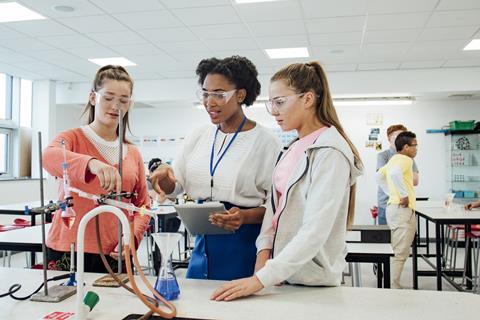Feedback is an essential tool in the learning process, make it effective with these hints and tips

What is effective feedback?
Feedback is a communication process. It therefore demands that both the giver and receiver are listening to each other and, as a part of questioning, it is an essential tool for developing students’ thinking.
Oral feedback is given throughout teaching sessions both to groups and individuals. This will also be heard and absorbed by others. Written feedback is usually more tailored to the individual.
The key principles are that feedback relates to known objectives and criteria, it is positive about success, it is reasoned and it moves students forward.
Why use this technique?
Feedback provides encouragement and stimulation and can be used to advantage in a variety of ways when developing and consolidating ideas.
Importantly, it provides an opportunity to show personal interest in a student’s progress and celebrate their success.
Students benefit from both immediate oral feedback as well as written, which is often more considered and individualised, by helping them to:
- see how they are progressing
- see why they were successful and so be able to repeat that success
- identify misunderstandings.
- understand the preferred approach
- see how to improve and to take the next step
It motivates students to improve their learning rather than chase grades.
How do I set it up?
- Design sessions to have dedicated, though short, opportunities for feedback throughout.
- Build in time for students to respond to feedback and take the necessary actions.
- Give feedback to groups as they work on tasks.
- Where several students share the same errors, give them feedback together.
- Make use of peer-to-peer feedback; students take notice of what their colleagues say to them and to others.
- Make oral feedback a regular feature of sessions.
- Use badges or stickers as a symbol of achievement.
- Give written feedback regularly but less frequently. This frees time so that written feedback can be more detailed.
- To make an appraisal of learning, and therefore be able to give true support, set tasks that will show the student’s reasoning.
- Make comments or ask questions that not only generate action but develop thinking.
Hints and tips for effective feedback
The principles
- Relate feedback to learning objectives and criteria for success.
- Focus on learning and improvement.
- Comment on the work/performance, not the person.
- Check that students have taken action as a result of feedback.
- Feedback has the most value when it is timely. It should also prompt immediate action.
- Point students towards further help.
Housekeeping
- Start by noting at least one success before dealing with areas to improve.
- Be specific.
- Make the message clear.
- Use language that is understandable.
- Write legibly.
- Attach a separate comment sheet to notebooks, or email students, to help keep track of comments.
- Take care with body language as it colours feedback.
Is there anything else I should think about?
When providing or creating opportunities for feedback, consider:
- How to make feedback, and student response to it, a routine part of learning.
- Responding to student requests for help.
- Setting a supportive atmosphere, so that students are comfortable about giving and receiving feedback in public.
- Creating a culture where a misconception is viewed as a learning opportunity.
- Making parents aware that detailed comments help students more than marks do.
Common issues to watch out for
- Allowing individuals to dominate in feedback interludes.
- Overestimating the amount of feedback actually given.
- School systems requiring that marks be given.
- Trying to give written feedback so often that there is insufficient time to do it properly.
How can I tell if it is successful?
When you devise your checklist to evaluate the session, consider how you will measure:
- How well your comments relate to objectives and criteria.
- The extent to which students take action.
- Any improvement in work standards.
- How much the students want to improve and study further.
You can ask the students for feedback, too.
Additional information
This information was originally part of the Assessment for Learning website, published in 2008.
Principles of assessment for learning

Encourage your students to take an active role in their learning using these assessment for learning principles to structure and plan your chemistry lessons.
- 1
- 2
- 3
- 4
- 5
 Currently
reading
Currently
reading
Using feedback
- 7































No comments yet